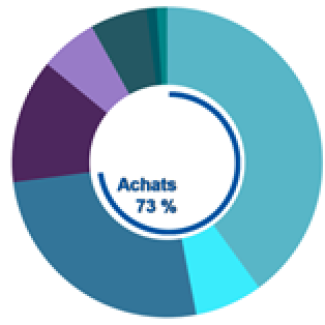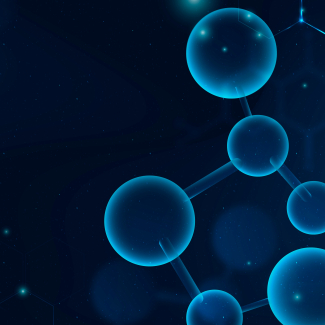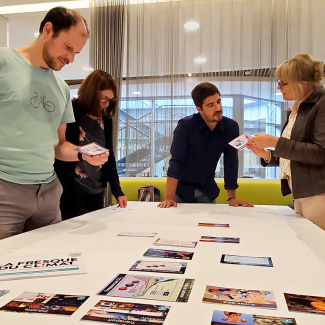
"There is no reason for scientists to make an exclusive free copyright transfer of their work to publishers"
The CNRS encourages its researchers to apply the rights retention strategy when submitting a manuscript to publishers.
What is the rights retention strategy (RRS)?
Alain Schuhl : Scientists own their work, so there is no reason for them to make an exclusive free copyright transfer to a publisher, which denies them the right to reuse their own publications. The rights retention strategy makes it possible for researchers to release the accepted author manuscript (AAM) of their work for immediate open access in an open archive. This also includes AAMs of articles published in subscription journals. This strategy means immediate open access is now possible without paying publication charges—misleadingly known as article processing charges or APCs.
What is the framework for the application of this strategy?
A. S. : The rights retention strategy is driven and promoted by the members of cOAlition S (including the French National Research Agency - ANR - and Horizon Europe, Europe’s research framework program), a consortium of national research agencies and funders that developed Plan S1
. It is mandatory for any project funded as part of the ANR's Action Plan for 2022 and or by Horizon Europe to apply this strategy to all publications in all journals, whether these are subscription, hybrid or full open access journals. The CNRS is calling for the application of this strategy, which goes further than the Law for a Digital Republic on two levels. Firstly, it represents progress in saving time because it removes the embargo period, which can vary from six to twelve months depending on the discipline involved. Secondly, it represents geographical progress, because its international dimension makes it possible to leave behind the purely French framework set by the Law for a Digital Republic.
How should the rights retention strategy be implemented?
A. S. : It is a simple process. Authors only need to add the 'CC-BY 4.0' reference to their manuscripts along with the URL link describing the CC-BY license they select. When submitting the manuscript, authors should inform the publisher of this and can use model sentences to do so that are provided in the implementation guide published by the Committee for Open Science's Publications College. The last step is to share the manuscript online in an open archive - in this case HAL2
. All these steps need to be repeated for each version of the manuscript right up to the AAM.
Why is this strategy called 'stratégie de non-cession des droits d’auteur' in French?
A. S. : The English term 'rights retention strategy' was translated into French as 'stratégie de non-cession des droits', literally 'non-transfer of rights strategy'. The exact full wording would need to be: 'strategy of non-exclusive transfer of rights to a publisher'. By putting a CC-BY license on all their manuscripts up to the AAM from the word go, authors can prevent their publication from being completely taken over by a publisher. This is why it is called a 'rights retention' strategy in English because all the rights are not transferred exclusively to a publisher. But putting a CC-BY license on an AAM actually corresponds to a 'strategy to open up the rights' because researchers who do so no longer have to authorise others to translate or disseminate their publications and so on. Moreover, authors will be able to freely re-use their own texts, graphics and other content for teaching purposes or any forms of communication, which is impossible when all the rights are transferred to a publisher.
What would you say to researchers who are afraid of how their publisher might react?
A. S. : Indeed, publishers' responses to this strategy have been ambiguous. Either they have redirected authors applying this strategy to another journal which has a required publication fee or they have demanded that researchers remove their AAM from the open archive where they deposited it (which is impossible) among other attempts to confuse scientists. If you are faced with this kind of situation, cOAlition S invites you to change journals and at least 'name and shame' those concerned.
What still needs to be achieved in terms of open science?
A. S. : By advocating the implementation of the rights retention strategy, our aim is to facilitate the development of immediate open access to accepted author manuscripts. The next step is to develop immediate open access to 'versions of record' (VoR) or 'publisher-edited PDFs'. Therefore, we still need to continue working on the development of the so-called 'diamond' scientific publishing in all disciplines. This enables immediate open access publishing without requiring the payment of an APC. This form of publishing can only exist on a long-term basis with the support of public institutions. Until it becomes generalized, the CNRS's message is clear: authors should opt for subscription journals, avoid paying APCs, apply the rights retention strategy and above all should deposit their author- accepted manuscripts on HAL.
- 1Launched in September 2018, Plan S requires that, from 2021, scientific publications that result from research funded by public grants must be published in compliant Open Access journals or platforms.
- 2HAL is an open archive where authors can deposit scholarly documents from all academic fields. It is run by the Centre pour la communication scientifique directe (CNRS/Inria/Inrae). While it is primarily directed towards French academics, participation is not restricted to them.


